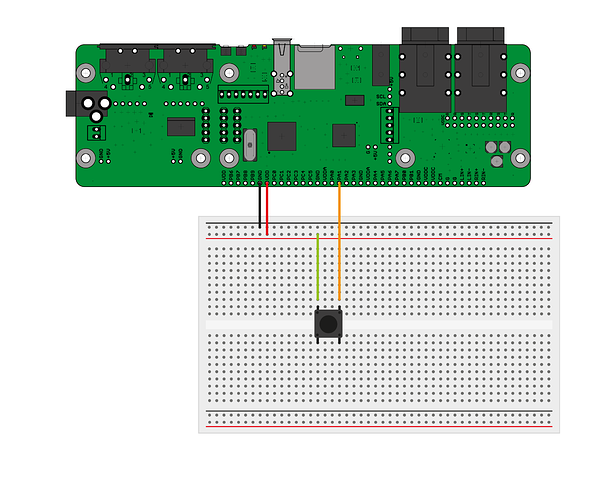hi, Jan
looking really terrific.
thanks for taking the time to put out such a useful resource!
Getting Started with Axoloti, the Book
Hey I'm only interested in the last chapter, but if this fits my need I'd buy it.
But I'm a tech noob and like to know, if I understand it and learn how to attach potentiometers (hardware and software). I'd like to use the axoloti as a guitar effect engine and, therefore I need the potis.
Could you tell me a bit about the content and how difficult it is?
I have another question, a bit unrelated, but maybe you could tell me: Is it possible to change the presets via poti instead of midi? I don't want to use a midi controller, because of the place they take and the costs. But changing presets is a nice feature.
Thank you!
These are the topics I'm covering in the last chapter. Chapter 5 may be useful as well if you want to create a guitar effects box. You can listen to all the effects from chapter 5 (bass guitar + guitar) on SoundCloud: https://soundcloud.com/janvantomme
- Connecting MIDI Controllers
- Connecting the iPad
- Connecting an LED
- Connecting Buttons, Toggles and Switches
- Connecting a Potentiometer
- Connecting an Analog Thumb Joystick
- Connecting a Distance Sensor
The book contains a lot circuit diagrams like the one below, and detailed explanations on how everything works.
The easiest way to switch presets, or even full patches is with a pushbutton. A foot switch might even be the best option in your case so you can switch effects while playing.
I've just published the final chapter of the book. These are the topics covered in chapter 6:
- Connecting MIDI Controllers
- Connecting the iPad
- Connecting an LED
- Connecting Buttons, Toggles and Switches
- Connecting a Potentiometer
- Connecting an Analog Thumb Joystick
- Connecting a Distance Sensor
I've kept the price of the book low while I was writing it, so with the publication of the final chapter, I've also set the full price. However, to celebrate the launch, I've created a coupon code that is valid until the end of this month. Browse to this URL to use the code: https://leanpub.com/getting-started-with-axoloti/c/full-book-launch
Since this is a digital-only book, I will add new topics in the future. Something that wouldn't be possible with a physical book. I'm also looking to hire an editor to make the book even better, but I'll first have to sell a few hundred books so I can pay that person.
Just bought! Looking forward to digging in soon.
Flicking through the PDF, I noticed it seems to stop rather abruptly at page 120. Is there a bit missing from the end?
a|x
Nothing is missing, the PDF indeed stops at page 120. I still need to add some extra things like a glossary, an about the author section, …
My main focus now was to get the content of chapter 6 out, since many people were asking about it.
Hmm, think this might actually be too basic for me by now. By the way, I don't agree with the way you add velocity in the first chapter! I think scaling the audio twice through two VCAs is messy, better to multiply the gate or EG signal by the velocity with a k-rate * object.
Thanks for the feedback. The book is mainly for people who just get started with synthesis. So if you have a background in electronics or dsp programming it may be too basic.
I might add your method for the velocity to the next release of the book. There's a lot of ways you can do things with Axoloti, using 2 VCAs to add velocity is only one of them.
Definitely lots of ways of doing things, I just feel like it's good practice to avoid unnecessary scaling of the audio, not to mention it's probably more efficient to use 1 k-rate * and one VCA instead of two VCAs. I think it's a valuable book for getting people started though if they don't have a clue where to begin!
Ok, yes, it's basic, but helps a bit with common Axoloti "conventions" and architecture. I have a NM G1 and it's quite different the basic operation, so I found this manual to be ok anyway.
I've decided to do a summer sale. You can get the book cheaper until the end of July if you buy it via this url.
https://leanpub.com/getting-started-with-axoloti/c/summer-sale-2016
I looked at your book before and couldn't really decide on whether or not to buy it. Well, now I did and it looks wonderful. Some step-by-step stuff to learn more about the Axoloti and common objects is just what I was looking for. And since there's not too much literature/videos outside this website your book just fills a gap.
By the way I think the Axoloti is not OUT THERE enough. The community ought to start some video contest or stuff - that's for sure! I think there are lots of people who have never heard of the Axoloti and would love it just as much as I do.
Just got my Axoloti and this book! Can't wait to work my way thru it so that I can have a solid understanding of Axoloti - this is going to save me soooo much time and mis-steps. Thanks so much for writing this. And by introducing LeanPub - a great resource!



 Let's start
Let's start 